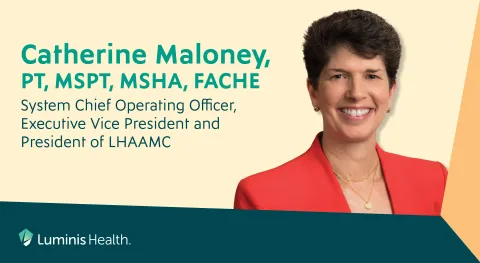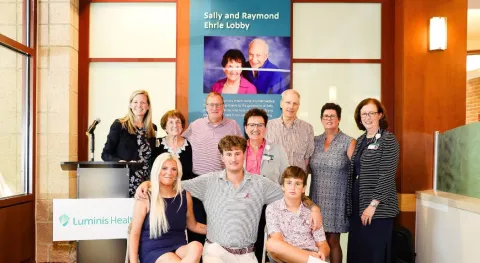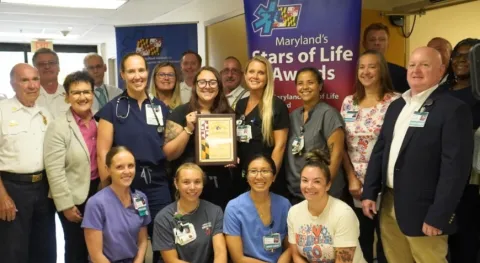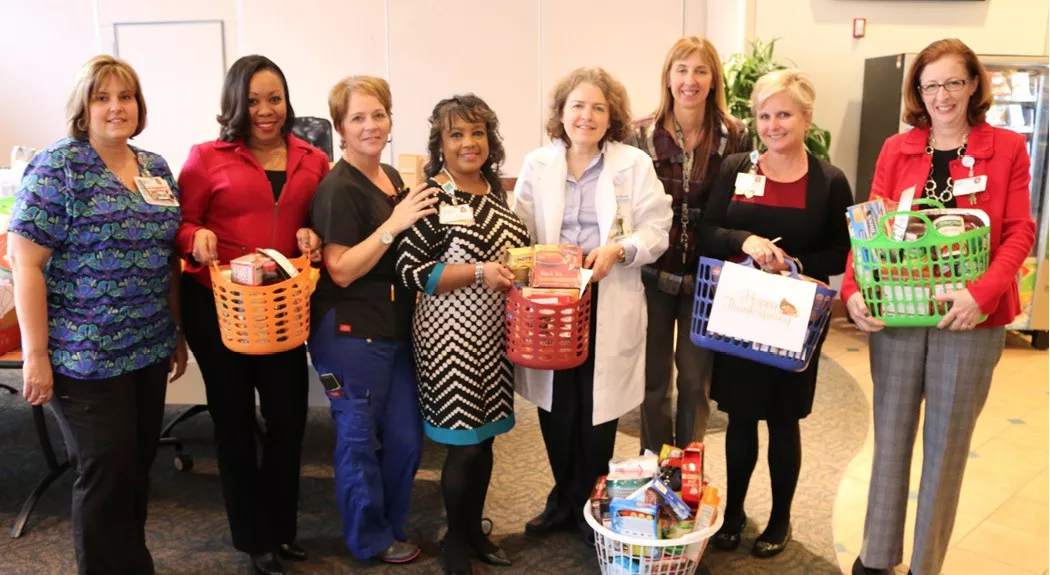
In 2015, the Community Service Initiative, including Chief Nursing Officer Barbara Jacobs, RN, and President and CEO Tori Bayless, presented 125 Thanksgiving meal baskets to the Light House Homeless Prevention Shelter in Annapolis, Md.
AAMC has long been a place of health, hope and healing for our community. But until recently, care has been mostly limited to treating illness within the walls of our hospital, doctors’ offices and other traditional settings.
As healthcare evolves to be part of our everyday lives (think Fitbits, nutrition diaries, and blood pressure monitors at home, the mall and grocery store), we too are evolving how we deliver care.
“We know that many of our sick patients have social needs that prevent them from getting care,” says Christine Crabbs, AAMC’s director of community health improvement.
Often it’s one small thing that pushes people down the path to poor health or a health crisis. For example, a man arrives home after a hospital stay. He is now wheelchair-bound but has no ramp to get up the front steps. He can’t get to the pharmacy to have his medications filled because he has no transportation. He has no family support or financial means. If the man’s basic and social needs aren’t addressed, there’s a good chance he will wind up back in the emergency room or hospital. And so goes the cycle.
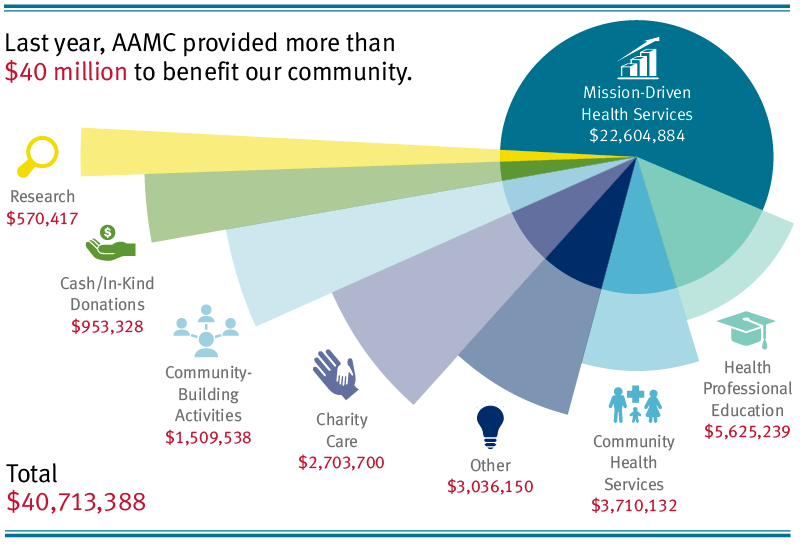
“AAMC is doing what’s called community-based care coordination,” says Patricia Czapp, MD, AAMC’s chair of clinical integration. “It’s a throwback to the days when doctors and nurses and social workers made house visits. We form a trust-based relationship with you and help you navigate the complex world of healthcare and illness, while helping to connect you to other resources. It’s a fundamental step in the direction of enabling healing and independence.”
AAMC ensures people get help at home through community partnerships. “We work with organizations like The Coordinating Center and Hopkins HealthCare to provide care management at home,” says Pamela Hinshaw, director of care management at AAMC. “Our goal is to help people maintain independence at home and in the community, safely and confidently.”
Learn more about how AAMC partners with the community.

